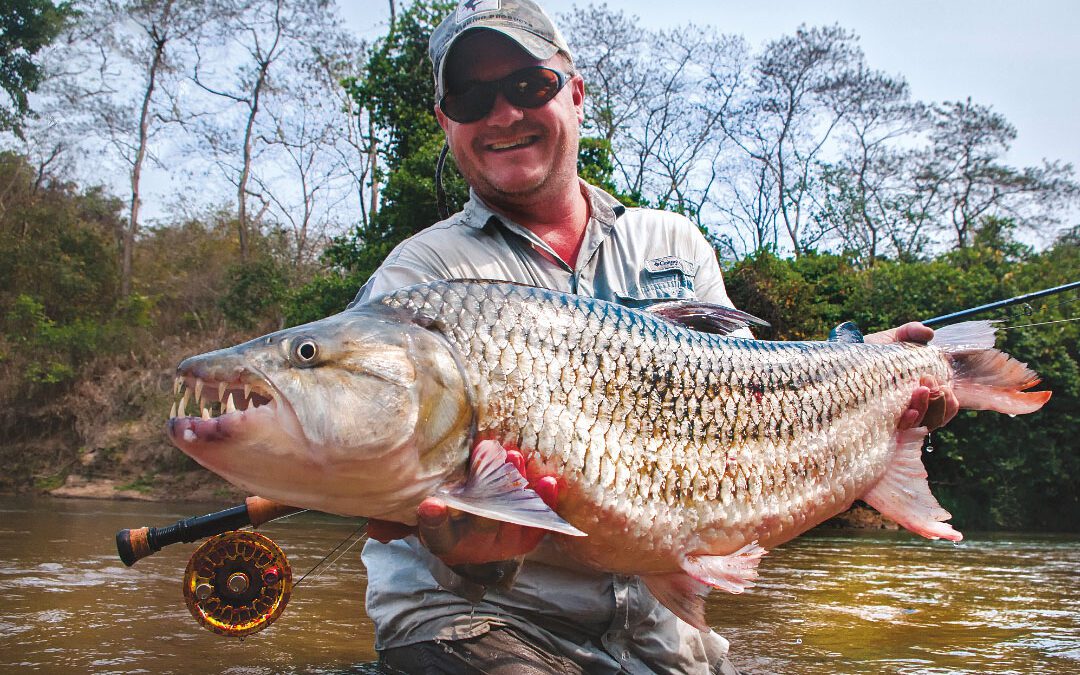It was our second morning of fishing on Tanzania’s Ruhudji River and we had just skirted a pod of agitated hippos on our hour-long boat ride to where we’d be fishing. Our guide, South African Mark Murray, told my partner Phil Satre to swing his fly across the head of a deep run while I trailed out line on my first cast to cover the pool’s tail-out. On my third strip I hooked a big fish that immediately took to the air. Twenty minutes later we photographed the hefty 16-pound tigerfish. It was a bad omen. This would not be the first time in my angling career that catching a fish on my first cast boded ill.
I had landed the day’s only significant catch, though we both had double-digit fish on and had been awestruck at the sight of an enormous tigerfish that had charged my fly, only to change its mind when it noticed a large leaf impaled on the hook.
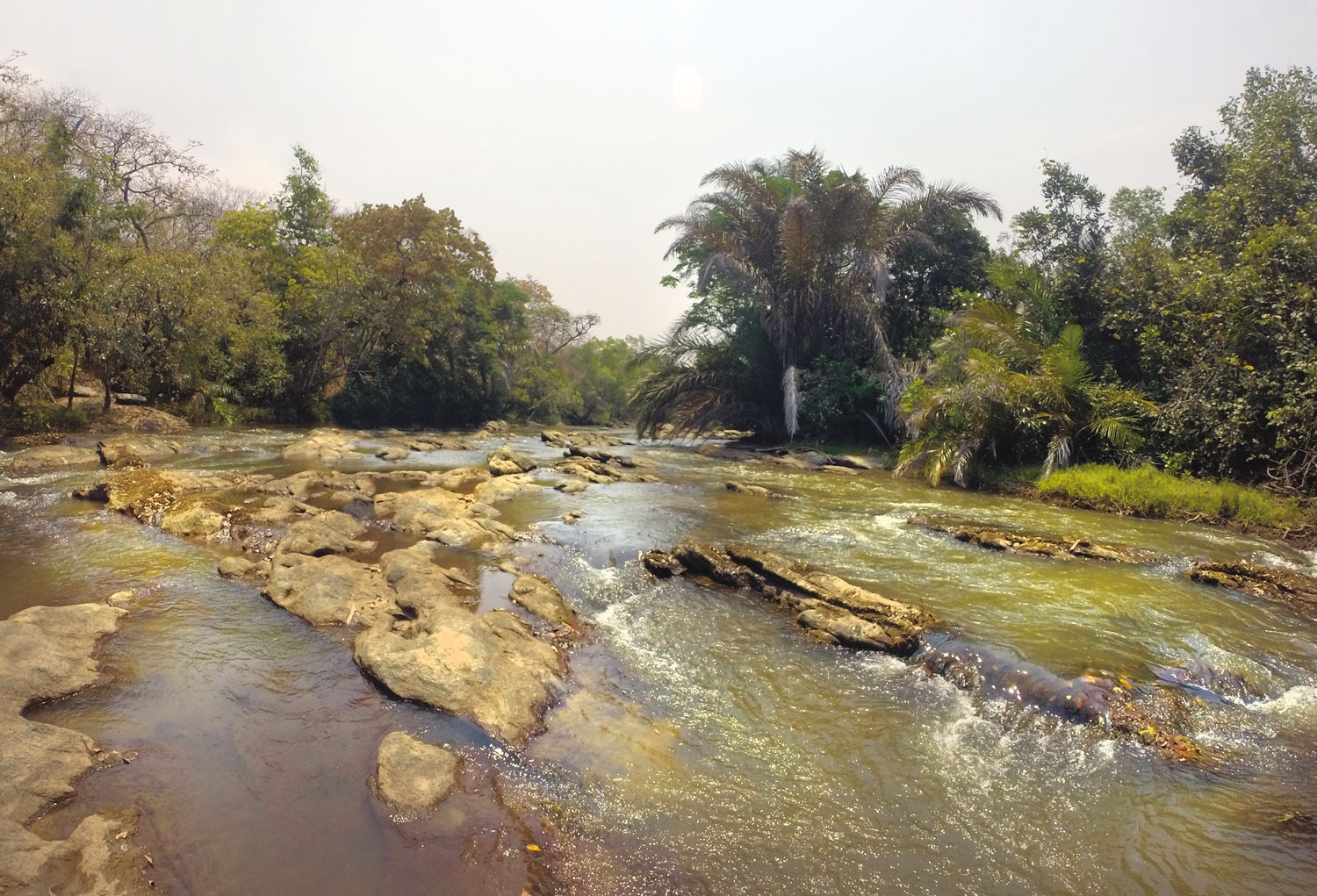
Altogether it was a lesson in humility and the difficulties of tigerfishing. With 40-pound-test leaders and wire tippets, we were urged to point the rod tip straight at the fish and then simply strip-strike as hard as we could. Yet the tigers’ formidable teeth and hard mouths managed to thwart many a hook-up. Once on, if a fish failed to throw the fly by violent head-shaking during one of its frantic leaps, it would head straight to the nearest structure and break you off.
The fish (Hydrocynus tanzaniae) I boated was a cousin to the tigerfish subspecies (Hydrocynus vittatus) that is Africa’s most revered freshwater quarry. Both fish are largely confined to Botswana’s Okavango Delta and the waters of the Zambezi (Great River in the Tongas’ language) of Victoria Falls fame that flows for 2,200 miles from the Central African Plateau to the Indian Ocean. The goliath tigerfish (Hydrocynus goliath) of the Congo River drainage is much larger and less frequently targeted by anglers, but that’s a different story.
Fly fishing for tigerfish is a recent development. The vast flow of the Zambezi’s waters are best fished with conventional spinning gear, and the largest prizes are generally taken at considerable depths.
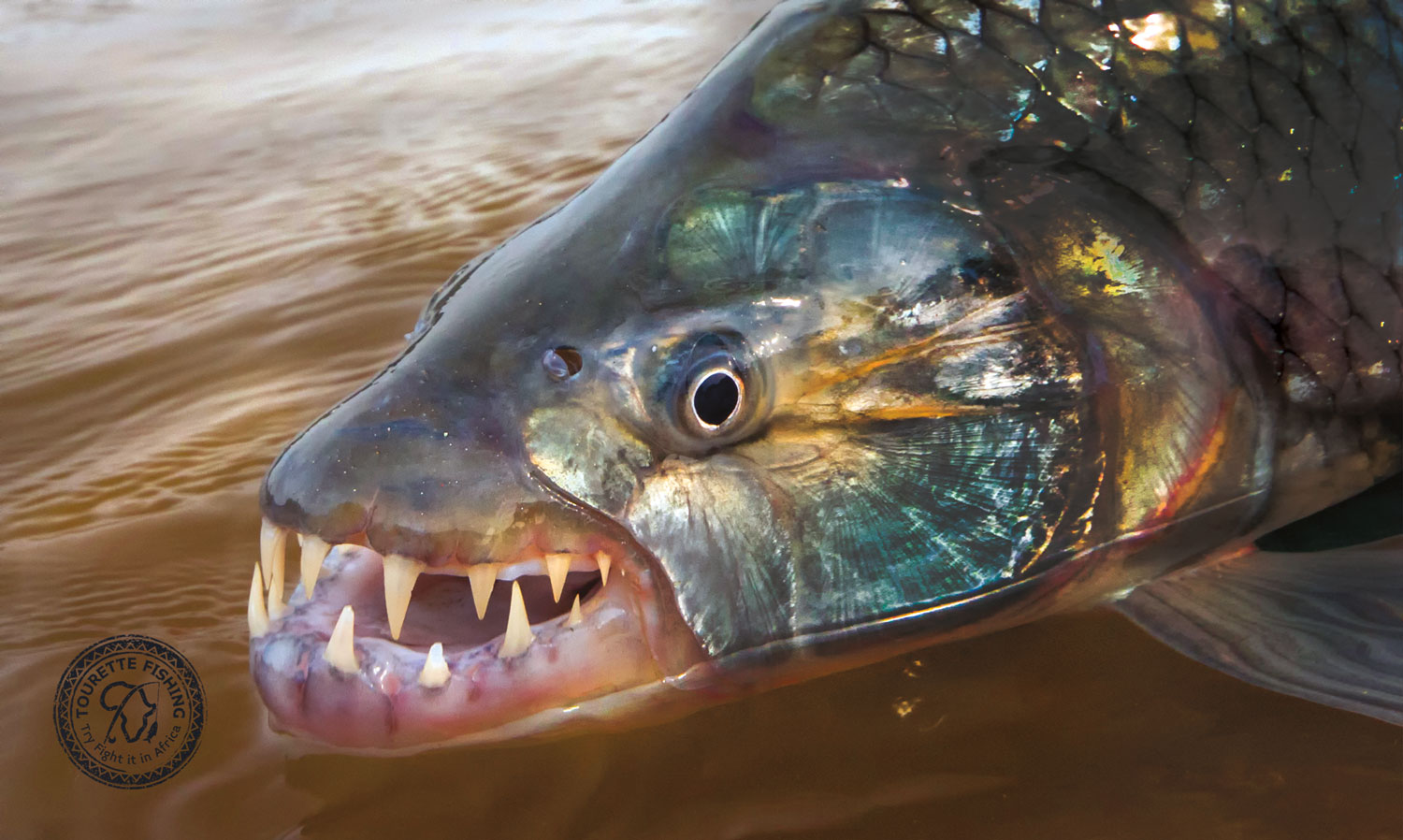
In 2008 a companion and I had fished for a week on the Zambezi, and news of my single double-digit catch (11 pounds) circulated among the lodges, since it was regarded to be an unusual accomplishment for a fly fisherman. That same year La Tourette Fishing of Capetown, South Africa, opened Tengo Camp on the Mnyera River and Samaki Camp on the nearby Ruhudji River, within a 7,000-square-kilometer hunting concession operated by the Kilombero Valley Hunting Reserve. These Tanzanian rivers are relatively small, shallow, and clear, making them prime fly-fishing waters. La Tourette primarily caters to (although not exclusively) fly fishermen, catch-and-release only.
We were eight anglers in all, to be divided equally between the two Kilombero Rivers. Our contingent included my fellow casino executive Phil, John Echeverria and his son Mark, a former Alaska fishing guide. John and I had experienced great fishing here three years earlier and were delighted to be back. Then there was Dr. Robert Montgomery, professor and chief surgeon of the Transplantation Division at Johns Hopkins School of Medicine, and his two sons John and Max. They were joined by Thomas Andrews, who had arrived from Canberra, Australia.
The first day, after an hour-and 40-minute charter flight from Dar-es-Salaam to a gravel strip and a half-hour ride in a Land Rover to Tengo Camp for lunch and orientation, we Nevada Boys traveled another three hours overland to the Ruhudji River where we were scheduled to fish the following three days. We would then swap rivers with the other group.
The game viewing on the two long transfers, as well as on the rivers, was simply magnificent. We saw herds of Cape buffalo, elephants, pukus, waterbucks, and hartebeests, troops of baboons and vervet monkeys, warthogs and bush pigs, a lioness and her two offspring—all in various stages from extreme wariness to full flight. These were real wild animals as opposed to the bored ones that await the tourist vans in most African national parks. Two different hunting parties were active within the reserve so we would be eating the meat of buffalo, warthog, puku, and bush pig.
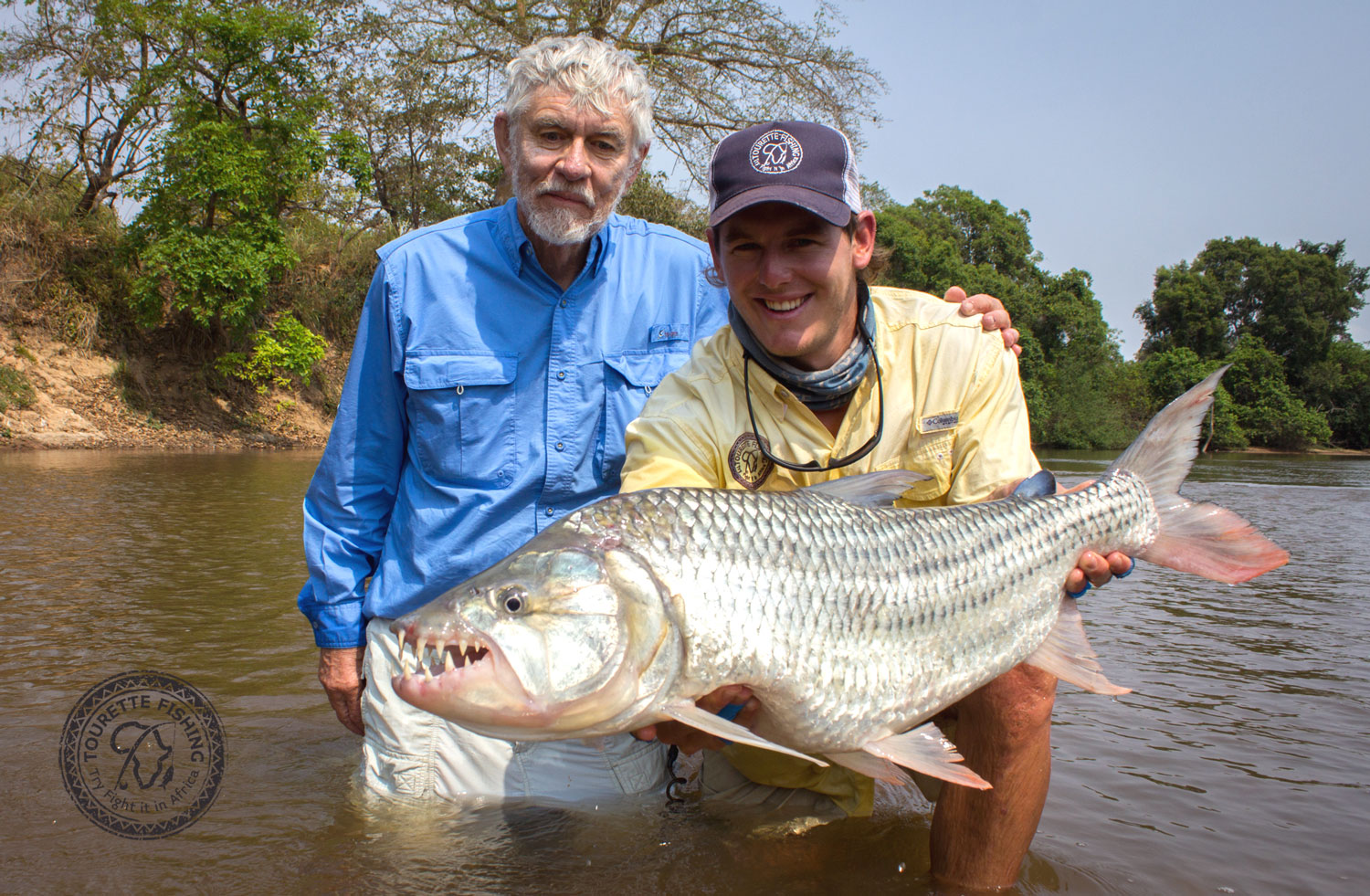
On our fourth morning I hooked a big tiger that took me into my backing, then challenged my angling skills with four spectacular leaps and a couple of cruises under our boat. Our guide, Greg Ghaui, netted the fish and tailed her in the water as we headed for a shallow sandbar for the obligatory photographs, weighing, and release. Given the crocodiles, you seek out the shallowest waters where you can see the bottom for a considerable distance.
As he hefted the big tiger for a photograph, Greg pointed to my frayed 40-pound-test braided wire tippet that had been frazzled down to a single strand. One more surge or jump by my prize and we would have been lamenting what might have been. She weighed 19 pounds (the larger tigers are females) and was my personal best.

I had almost caught an elusive 20-pounder—the holy grail on these Kilombero rivers. Over the life of the La Tourette operation, there has been an average of about one such trophy a week among eight rods. The largest IGFA record tigerfish (22 pounds) came out of here. Indeed, several 25-pound fish have been caught but not submitted to the IGFA (which, in fact, confounds the two smaller subspecies of tigerfish into a single category).
By week’s end we’d all landed double-digit tigers and lost many more. We knew by radio that Thomas Andrews had caught a 20-pounder on his first day and believed it to have been the largest catch of our week. But then our invisible campmates arrived at Tambo at dusk and stunned us with two Thomas Andrews’ stories.
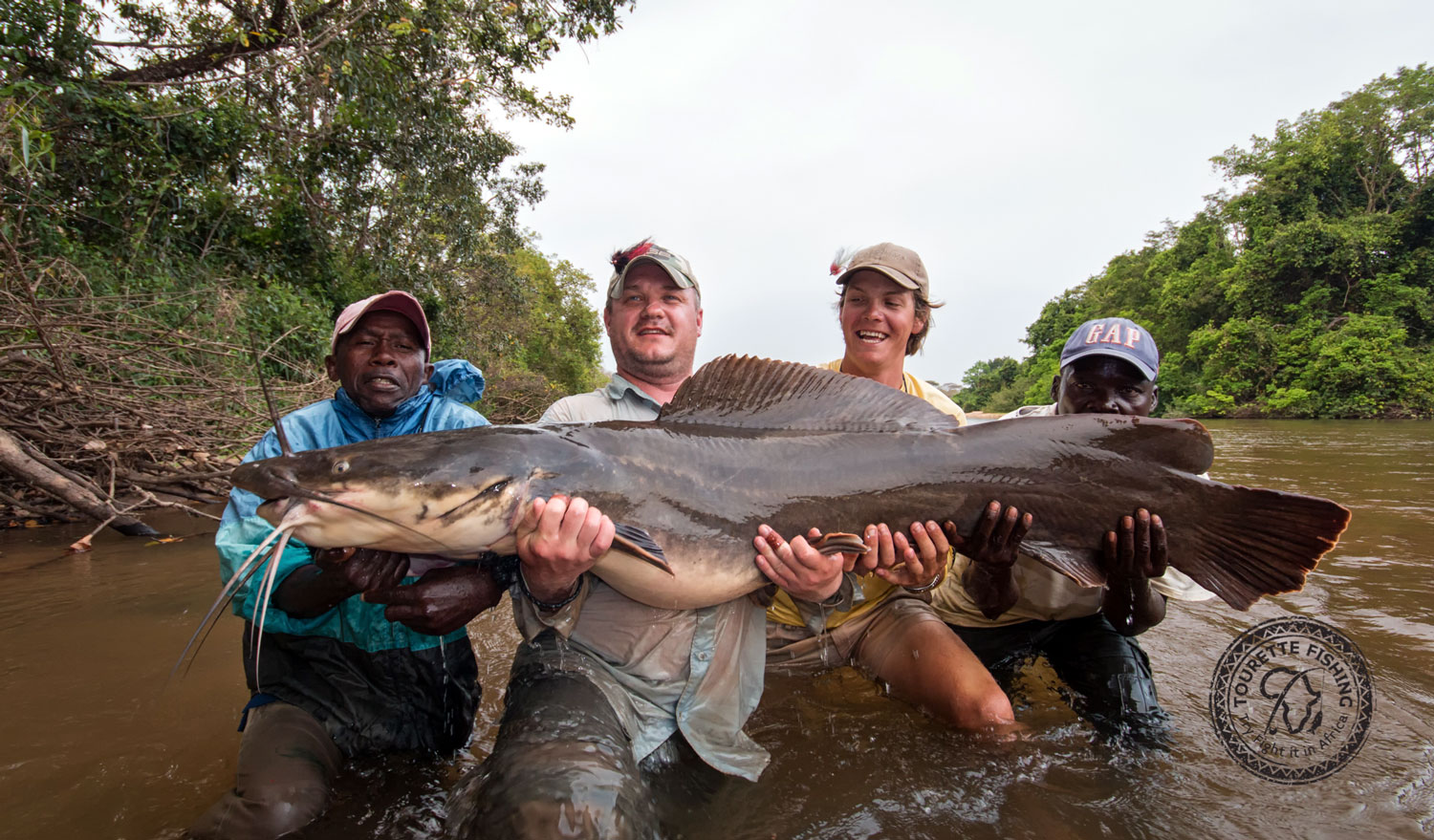
The first regarded a vundu catfish, a species that can exceed a hundred pounds. Two or three are hooked by under-gunned fly fishermen each season, resulting in broken lines and trashed gear. Thomas had brought along a conventional marlin-fishing rig. During one lunch break he had baited a large hook with buffalo meat and chucked it into a deep pool. It took four men to hold up his enormous catch for the photograph.
That story paled by comparison with the other. Thomas had caught a 28-pound tigerfish! Duly photographed and weighed on a boga grip, it was clearly the largest tigerfish ever caught on a fly and possibly any kind of tackle. There is nothing more to say

